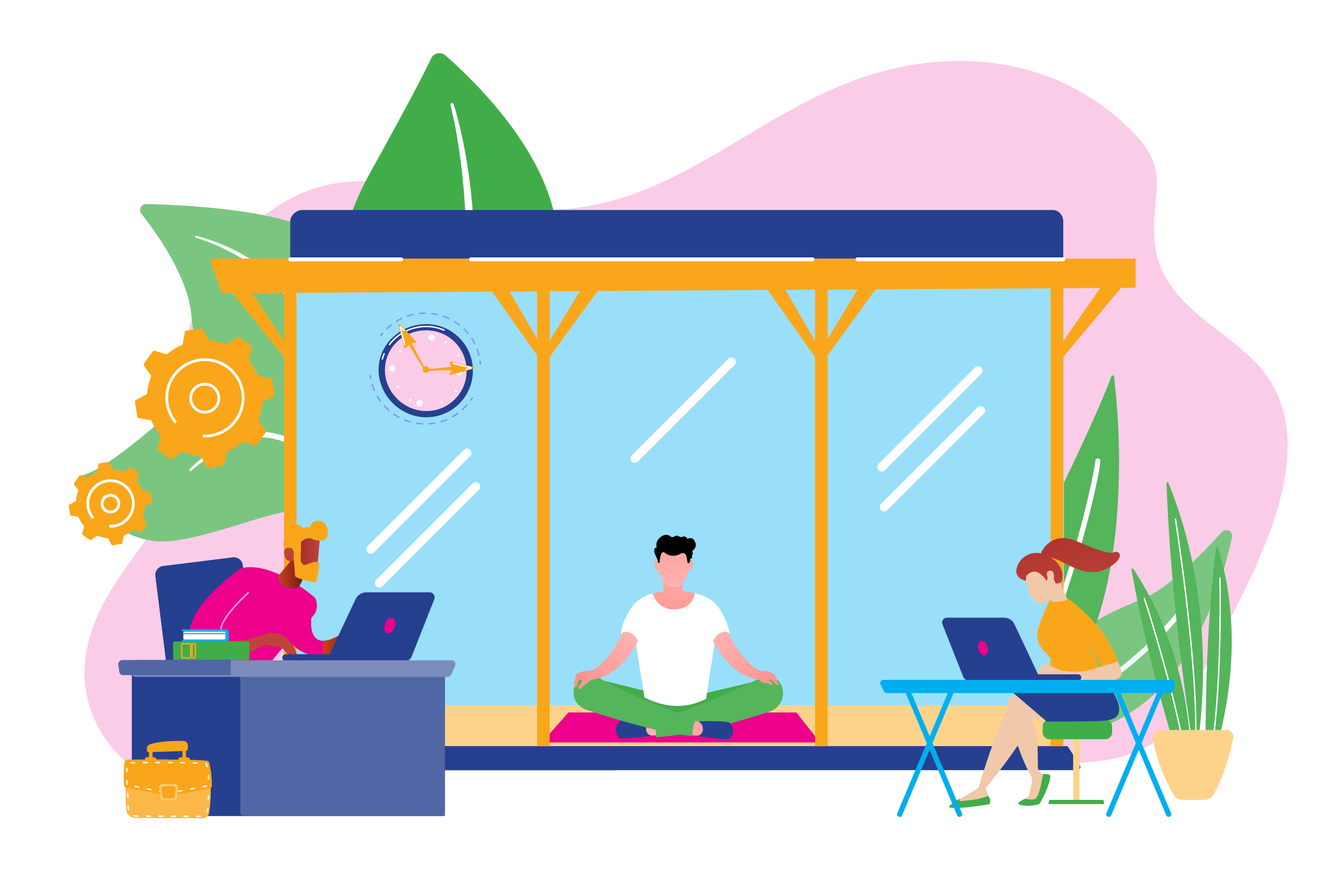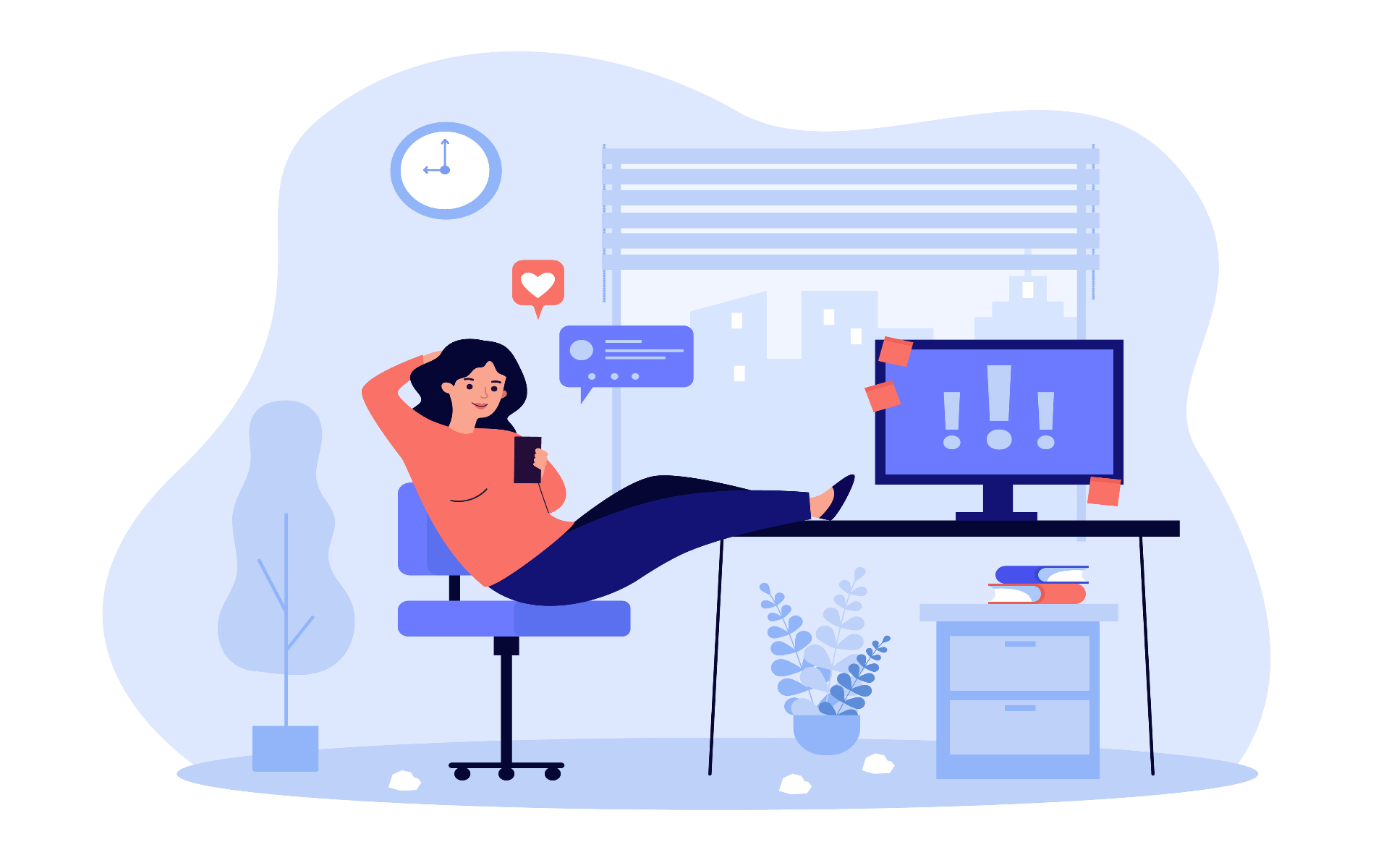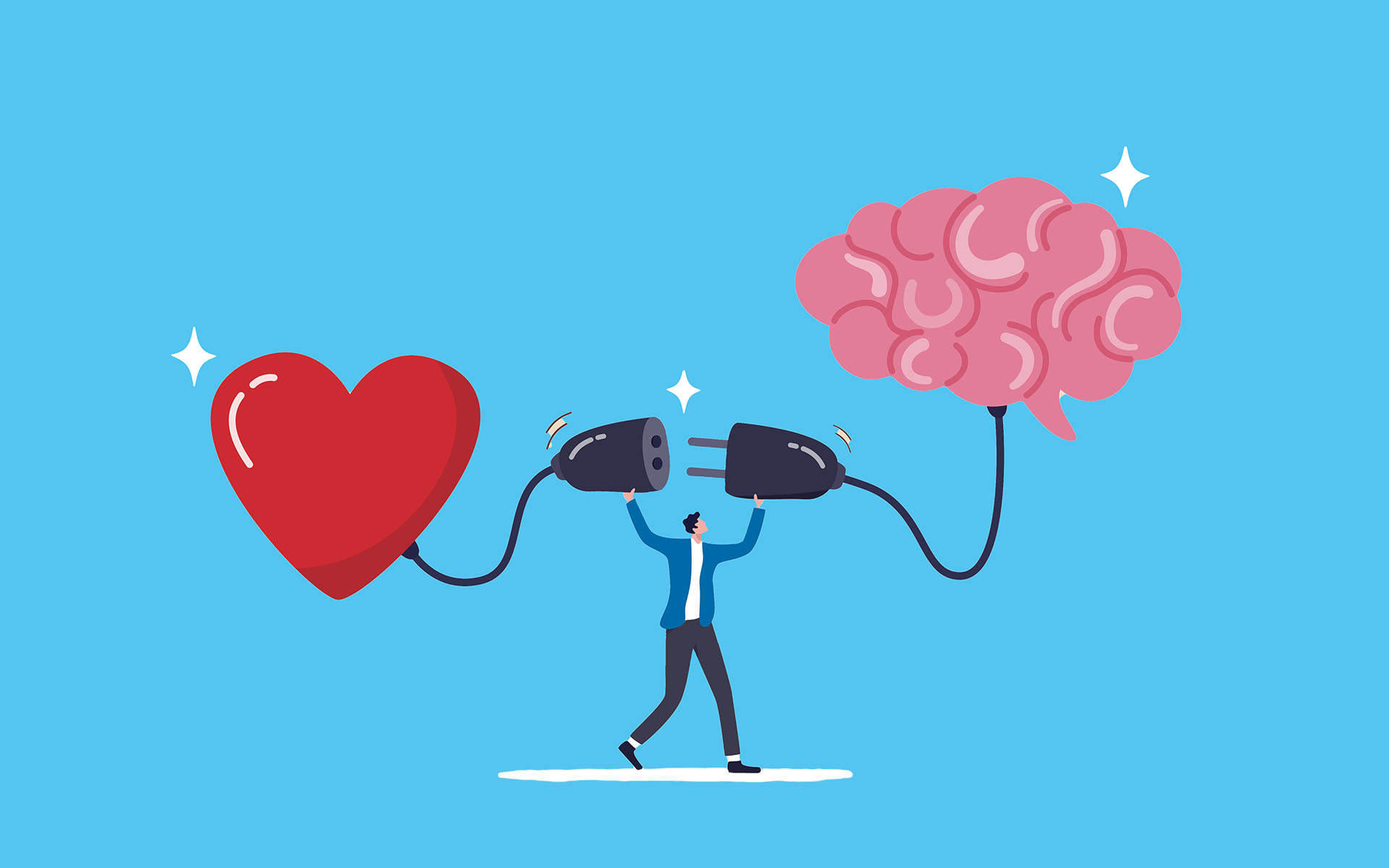Open offices, long meetings, and continuous partial attention across multiple devices can turn the workplace into a site of stress and burnout. Joe Burton, founder of Whil and author of Creating Mindful Leaders: How to Power Down, Power Up, and Power Forward, knows this all too well. Prior to discovering mindfulness, he worked 12-hour days as the COO of a $2 billion company and was part of the one-third of Americans who suffered from sleep deprivation, along with asthma, and chronic back pain.
“I think the average workday is not mindful,” he said. “It’s full of ongoing distraction, mistrust, multitasking, a wide range of emotions that can change from a text to a cell phone call to a Slack message.”
In an interview with Greater Good Science Center, he explained how modern offices produce a domino-effect of distraction, which is damaging to everyone involved.
“People [distract] each other all the time: They go into each other’s offices and cubes—Can I interrupt you? They get a text and scream out in the meeting, ‘Oh my gosh! This just happened!’ It’s almost like we’re in a video game and little villains keep popping up trying to throw us off course throughout the course of the day,” Burton said.
“People [distract] each other all the time: They go into each other’s offices and cubes—Can I interrupt you? They get a text and scream out in the meeting, “Oh my gosh! This just happened!” It’s almost like we’re in a video game and little villains keep popping up trying to throw us off course throughout the course of the day.”
In order to ensure his work day is mindful, Burton has made small changes to his routine. This includes starting and ending meetings on time, and drafting important emails in advance to let them sit for a day before pressing send.
“I think a mindful work day is intentional,” he said. “That means you start the day understanding what it is you’re going to accomplish, you stick to that agenda, and you limit or avoid distractions to the greatest degree possible.”
Burton offers a few daily mindful tips to weave into the workday:
Three Simple Ways to Boost Focus at Work
- Cut down on phone time
Without realizing it, constantly checking your phone can distract your mind and eat up your day. Challenge yourself to only check your phone once an hour. “Our phones are our number on source of distraction; the whole day can rise or fall based on what happens through our devices,” Burton says. - Take a mini-break
For every 50 minutes of work, Burton recommends taking a five to 10 minute break to give your brain a rest and ultimately increase productivity. “You would never run for 50 minutes and then just keep running. But we do it with our cognitive abilities every single day; we just sit down and plow through without giving our minds a break so that we can get back in and be more productive,” he says. A break can be as easy as taking a lap around the office, doing some brief stretches, or getting a drink of water. - Start an office meditation group
Constantly communicating through email or Slack can foster isolation. “Even sitting in an office full of people, you can go through social isolation where you feel disconnected, and then you start not trusting people, then you start doubting yourself, and you end up in a spiral,” Burton says. Make a commitment with your coworkers to meet face-to-face for five or 10 minutes each day, and practice meditation together. “Our team comes together at 3:00 each day for a 10-minute practice, and it’s a good break towards the end of the day. We usually have about five minutes of conversation after that: What did the practice mean to the group? What does it mean to the company? This ranges from things like emotional intelligence skills or self-awareness all the way through to things like managing stress or calming anxiety.”
Explore These Tried-and-Tested Mindful Work Practices
Burton has been practicing mindfulness for eight years. Below, he shares three practices he uses in his daily life to create a well-balance work day:
1) Start your day with purpose
For me personally, I do a 10-minute meditation practice (which is a form of attention training) at the start of each day. I’m an early bird, so I tend to do a practice before anyone else gets in [the office], just to calm my mind and set an intention for the day.
I look at my schedule for the day and ask the question, Do I need to have these meetings or not?, and finalize my schedule.
2. Use the Stop, Breathe, Notice, Reflect, Respond (SBNRR) practice
This is a long way of saying: Bring your thinking brain online.
When things happen, it’s very easy for us to take the bait and be led by our emotions. If we can stop ourselves more regularly, take a deep breath, notice what’s happening, reflect on How do I think about this? Does this even relate to me? before being drawn in, and then respond or choose not to respond, life is so much better. Otherwise, we can go through the entire day taking the bait.
So, start asking questions about what’s going on before the emotions kick in. If the emotions have kicked in, ask yourself things like, Why do I feel this way? Should I feel this way? Is there any reason to take this personally? How can I help the situation? And then you have a different conversation on your hands. In the absence of that, someone drops a stink bomb on you several times a day, then that’s your conversation, that’s what you react to. And if you get stuck in that routine, it’s not fun over the course of time.
3. Don’t underestimate the power of mindful listening
Another one that’s really powerful is mindful listening: literally just giving someone the floor for two to three minutes, letting them finish their entire thought stream. If you’re going to respond, respond with questions instead of answers, respond to help them further their thinking instead of shut it down. Making that a routine is really healthy because then you’re listening, you’re actually giving your own mind time to recover.
These are routines that can be learned, and we have to unlearn any existing routines. In the case of mindful listening, our existing routine for the vast majority of people is, I have been well-trained to interrupt people every 15-30 seconds without fail. I’ve been trained to take over conversations and lead the conversation in my direction. I’ve been trained to show how smart I am and not wait for someone else to showcase how smart they are. We get stuck in that routine where we don’t even realize it—which shuts down conversation and leaves people feeling disrespected.
This article was adapted from an interview by Greater Good, the online magazine of UC Berkeley’s Greater Good Science Center, one of Mindful’s partners. View the original article.
read more
Mindful Working: The Best Practices for Bringing Mindfulness to Work
Leading companies from Verizon to Google are bringing mindfulness into their company cultures. Here’s why they’re investing in employee well-being, creativity, and stress management.
Read More
Turning Toward Collaborative Leadership
How a deep mindfulness practice helped Jessica Morey loosen the reins at Inward Bound Mindfulness Education, and empower the organization to adopt a new way to work.
Read More
11 Ways to Finally Stop Procrastinating
The urge to put off daunting tasks can be difficult to overcome. In this 13-minute video from Big Think, author and podcaster Tim Ferriss shares a few easy ways to spark productivity and stop procrastination in its tracks.
Read More










